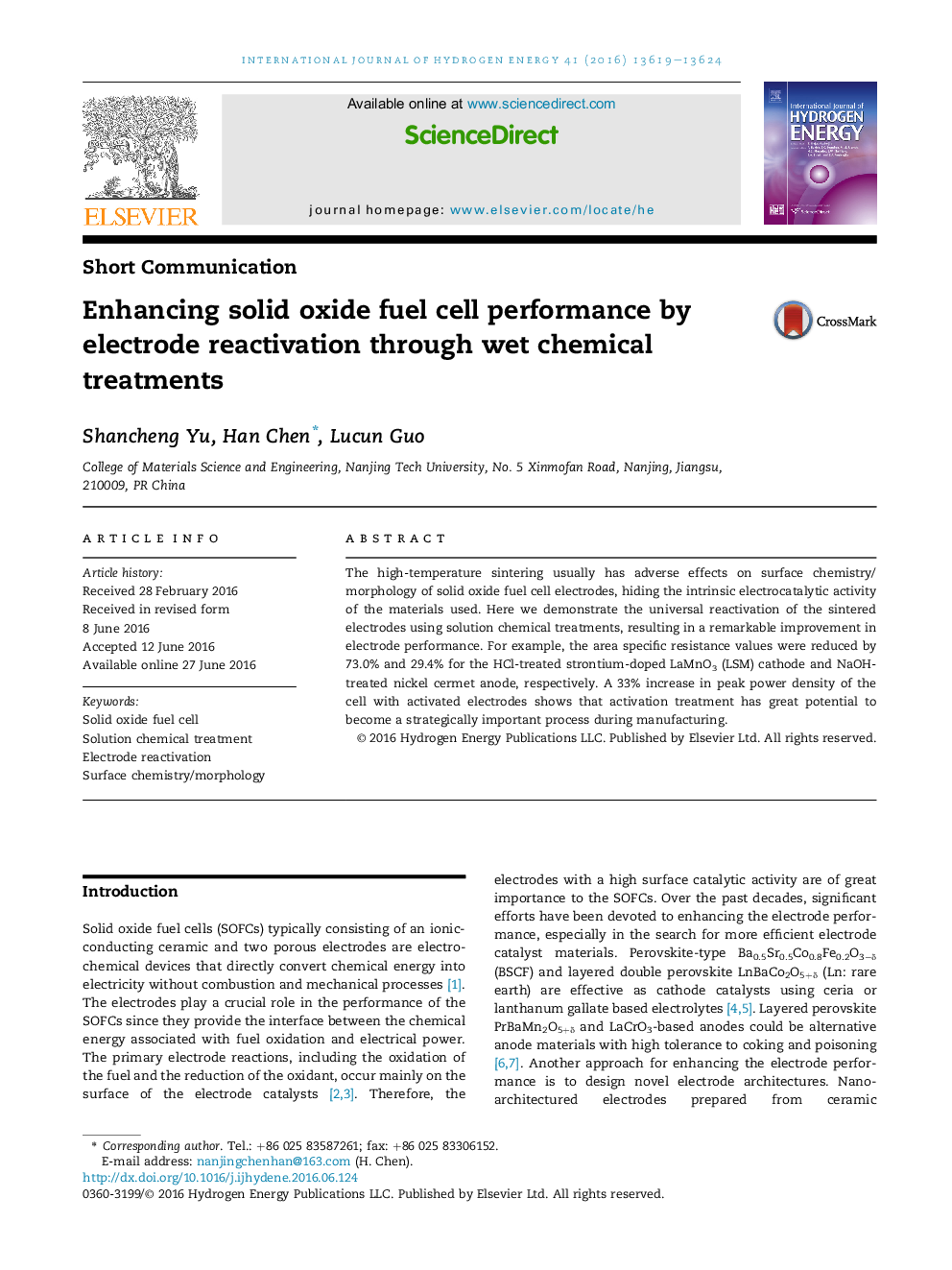| Article ID | Journal | Published Year | Pages | File Type |
|---|---|---|---|---|
| 1276476 | International Journal of Hydrogen Energy | 2016 | 6 Pages |
•High temperature firing hides intrinsic catalytic activity of electrode materials.•Solution chemical treatment modifies electrode surface structure/composition.•Universal reactivation of sintered electrodes is demonstrated.•Cell performance is improved by electrode reactivation treatment.
The high-temperature sintering usually has adverse effects on surface chemistry/morphology of solid oxide fuel cell electrodes, hiding the intrinsic electrocatalytic activity of the materials used. Here we demonstrate the universal reactivation of the sintered electrodes using solution chemical treatments, resulting in a remarkable improvement in electrode performance. For example, the area specific resistance values were reduced by 73.0% and 29.4% for the HCl-treated strontium-doped LaMnO3 (LSM) cathode and NaOH-treated nickel cermet anode, respectively. A 33% increase in peak power density of the cell with activated electrodes shows that activation treatment has great potential to become a strategically important process during manufacturing.
